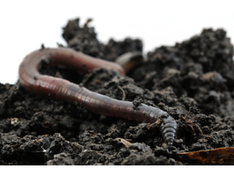
Great Lakes Worm Watch
Help researchers map earthworm distribution and species richness
- Ongoing
More Information
The Great Lakes Worm Watch needs citizen scientists to conduct earthworm surveys in forests and other habitats anywhere in North America.
Earthworms are not native to the Great Lakes Region; they were all wiped out after the last glaciation. The current population, brought here by early Europeans, is slowly changing the face of our native forests, but very little is known about the distributions of earthworm and earthworm species across the region. While valuable, this type of information is labor-intensive, and it is difficult for researchers to get funding to do this kind of work. Citizen scientists can help.
There are several ways to get involved:
-
Document earthworm occurrences: This involves collecting and sending earthworm specimens with location information to Great Lakes Worm Watch. These specimens will be archived at the University of Minnesota, and the species and location information will be added to the project database.
-
Collect habitat data: Great Lakes Worm Watch would like data from all habitat types, especially natural ecosystems like forests, woodlands, and prairies. In addition, data from habitats dominated by human activity are also of value, such as farm fields, pastures, and parks. Depending on your level of interest and expertise, you can choose to conduct a general or detailed habitat survey. You can use the instructions and data sheets developed by the project coordinators to make the data easily transferable to the database.
-
Conduct soil surveys: In addition to earthworm and habitat data, Great Lakes Worm Watch is also interested in getting data about the soil conditions at sites in which you sampled for earthworms. You can use the instructions and data sheet developed by project coordinators to make the data easily transferable to the database.
Get started! Anyone can make a BIG difference when it comes to containing the spread of exotic earthworms!
Ticket Required: No
Minimum Age: 13
Languages: English
